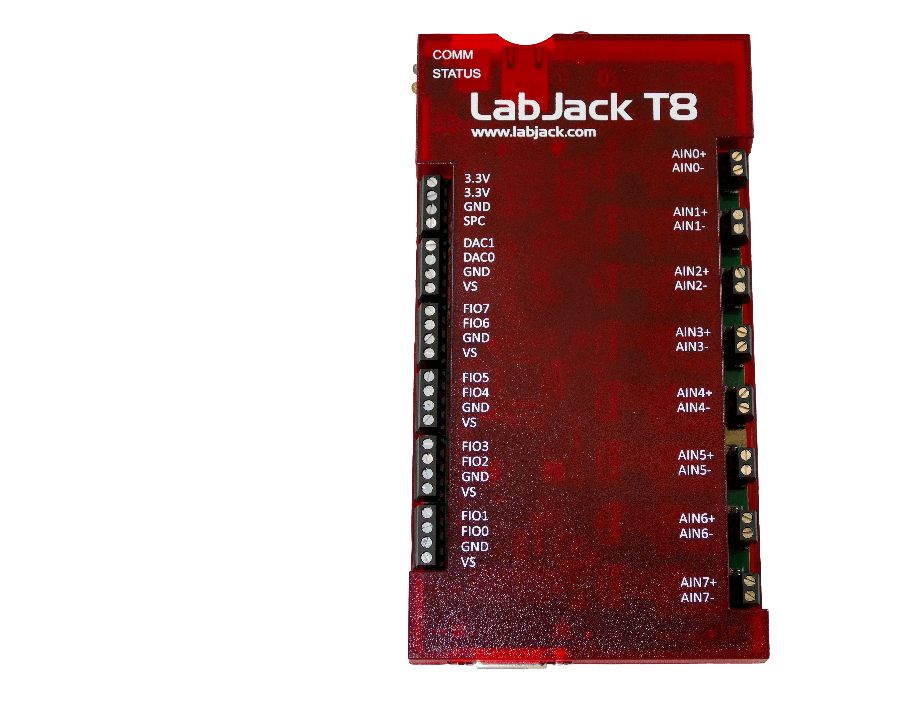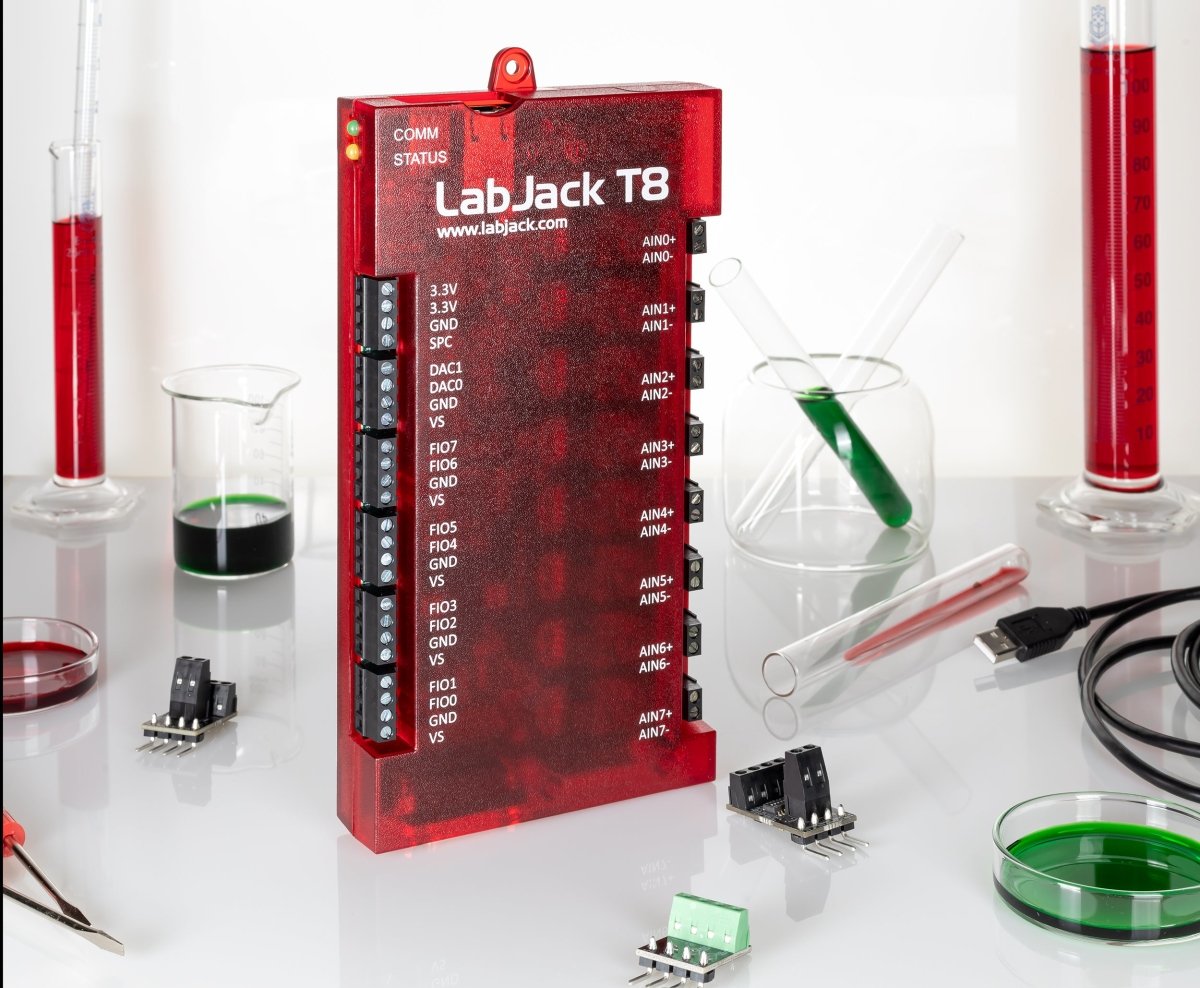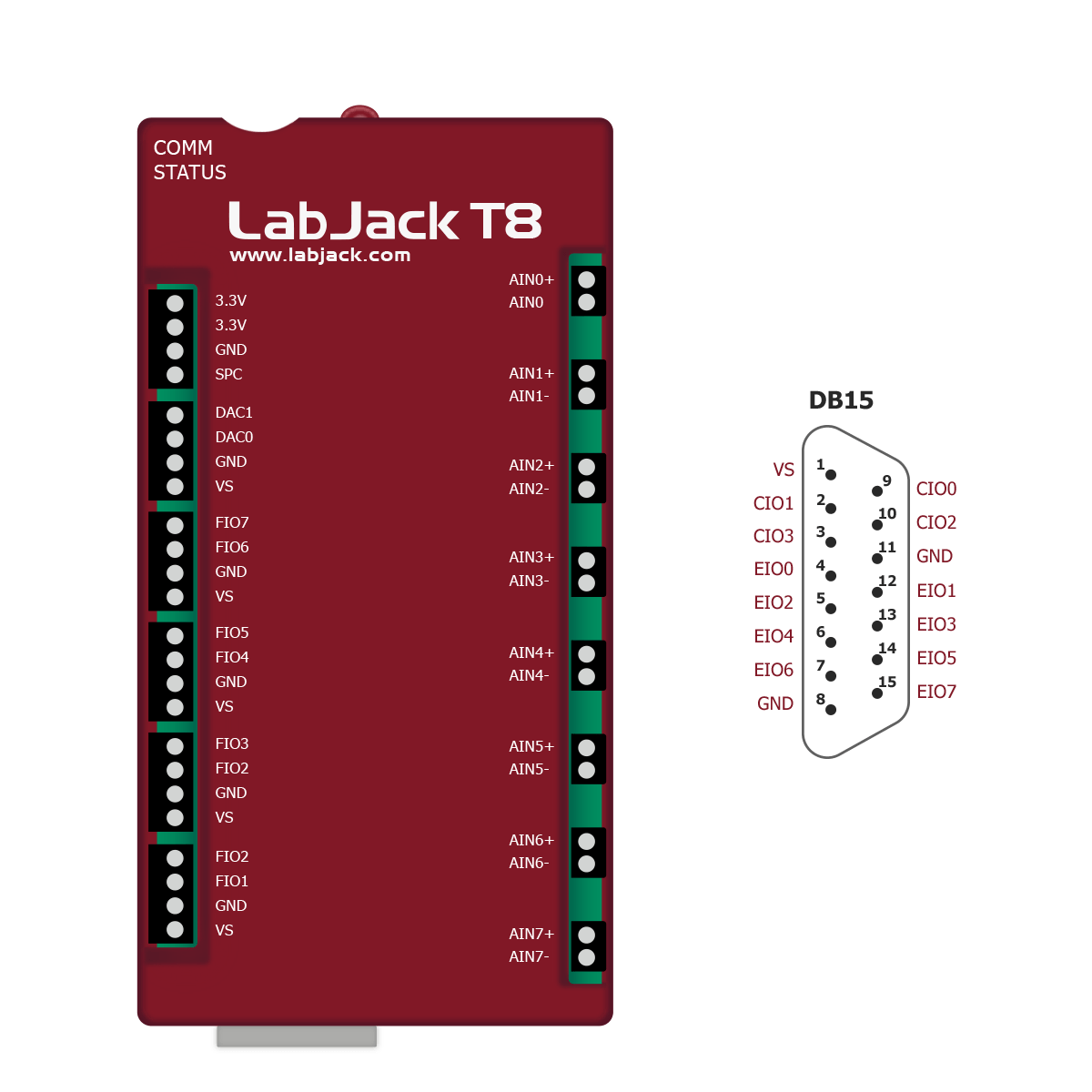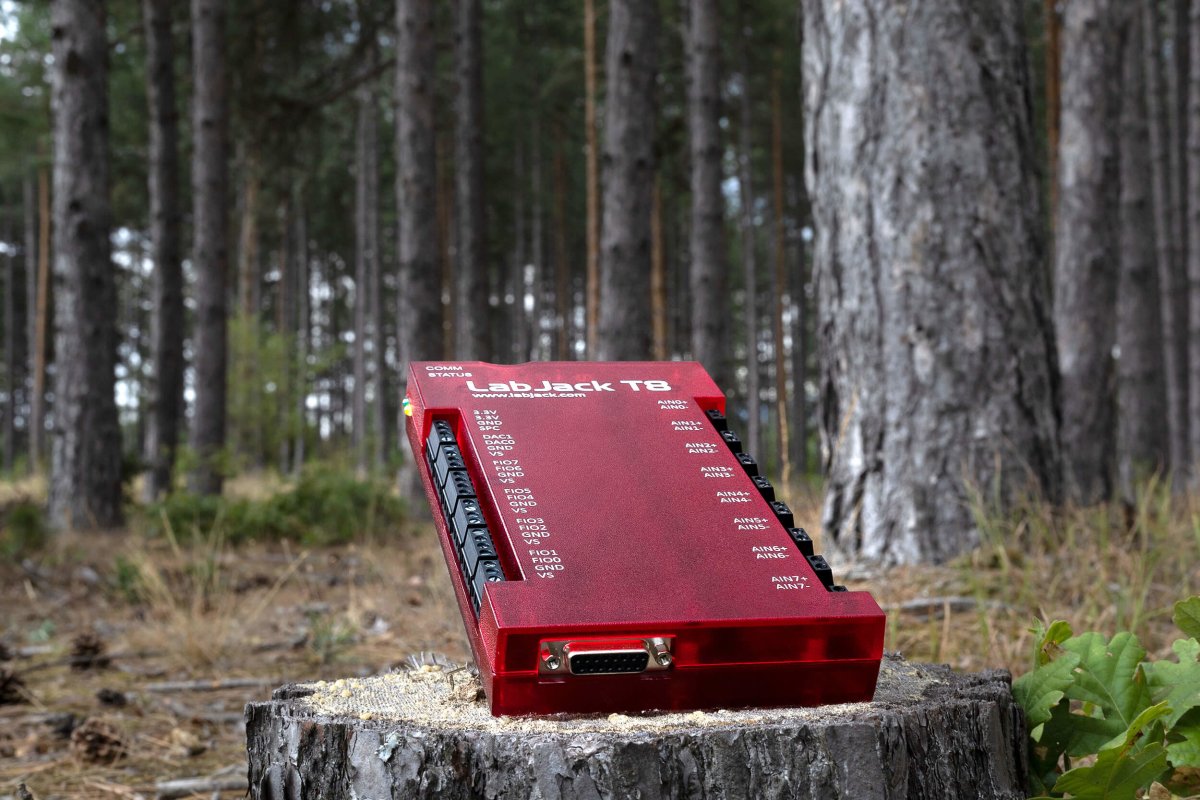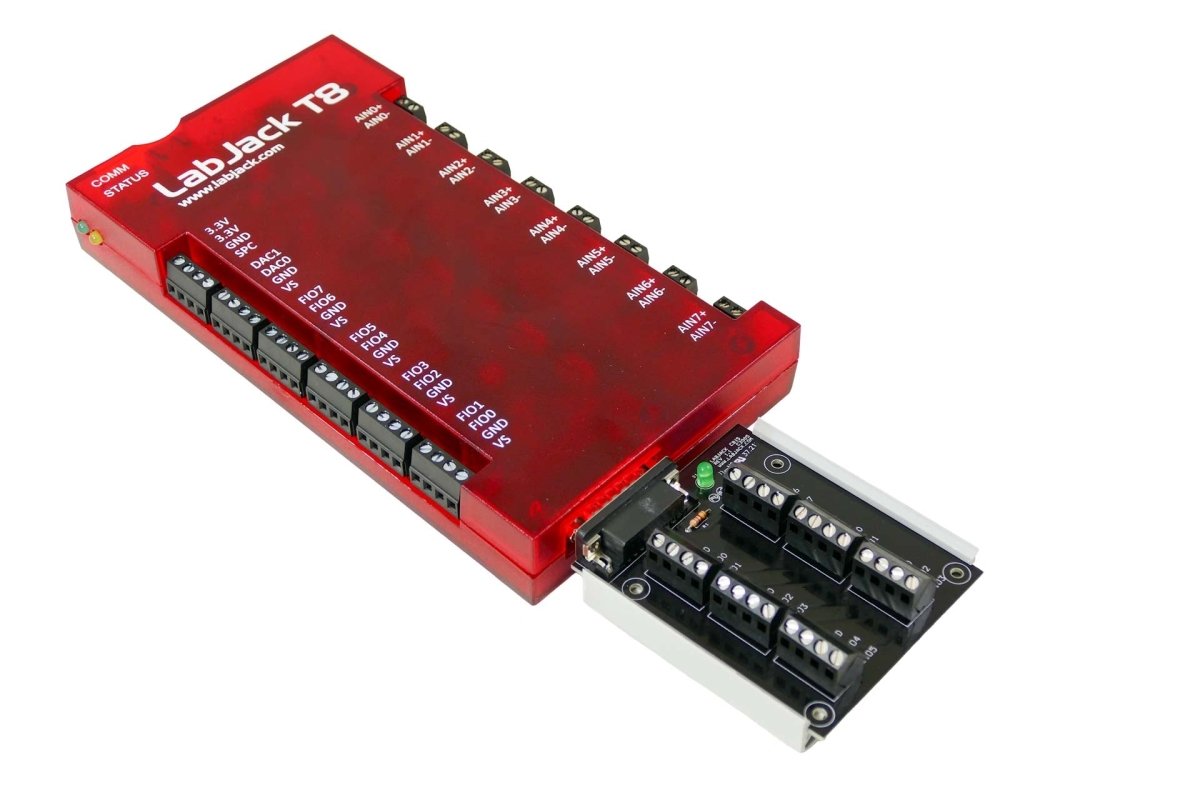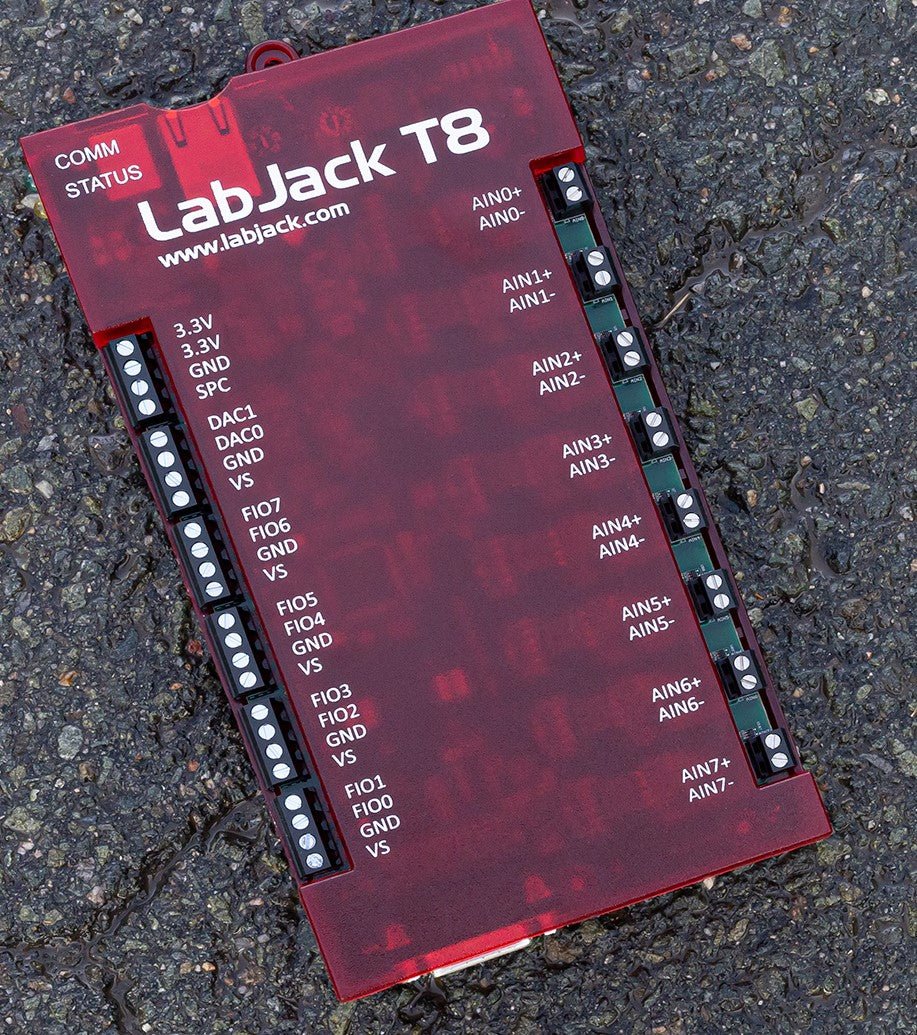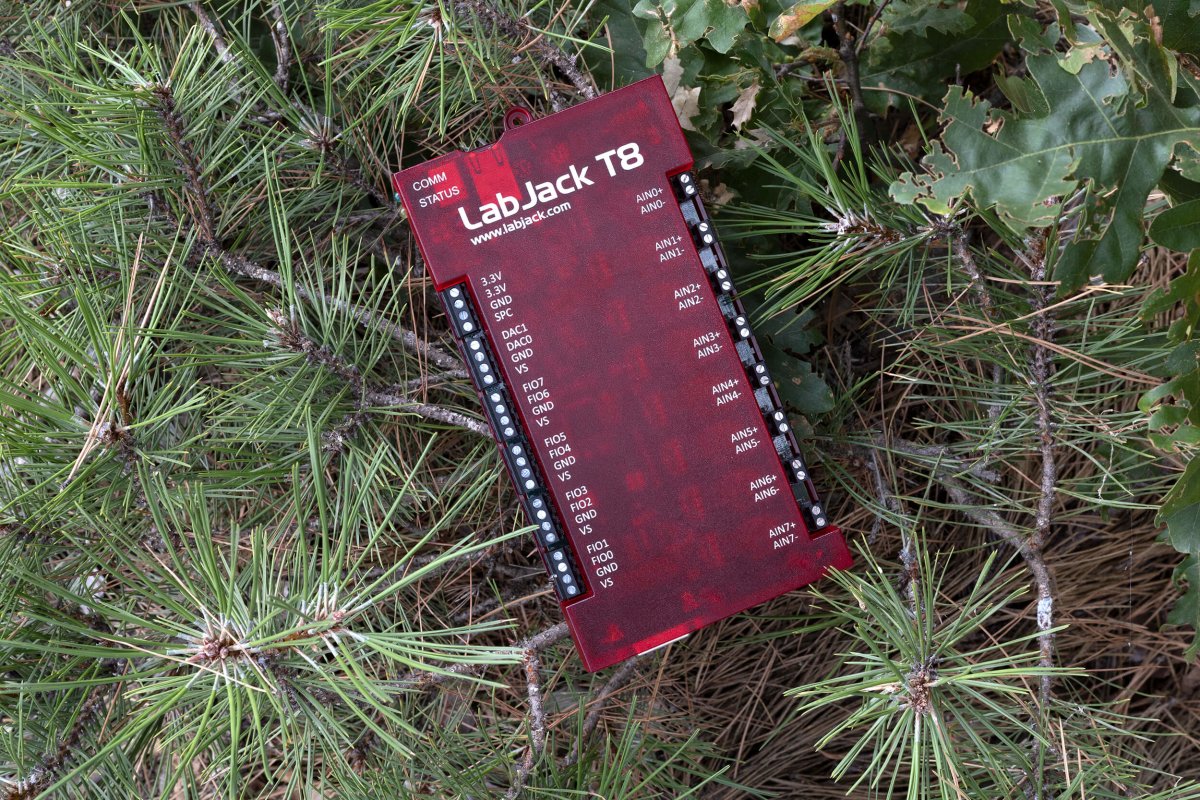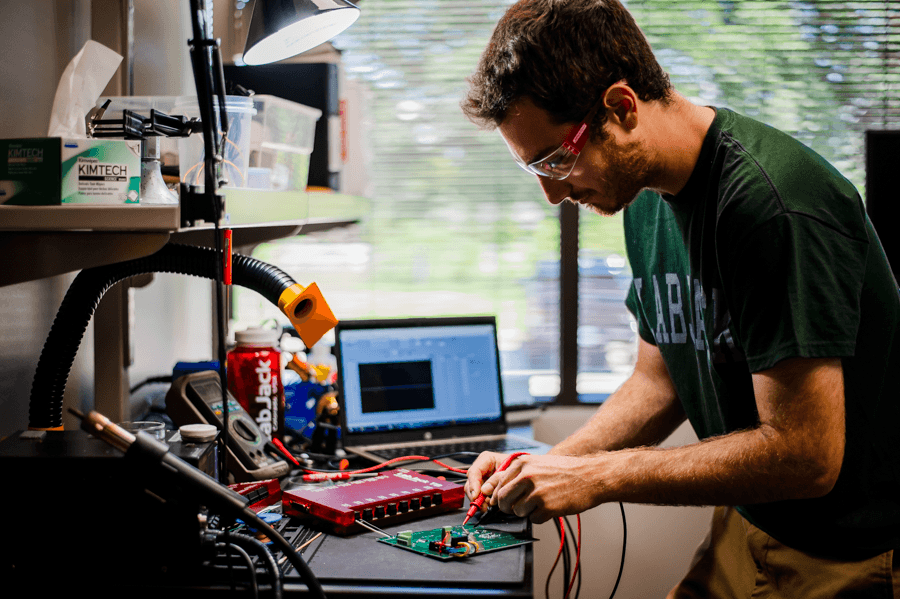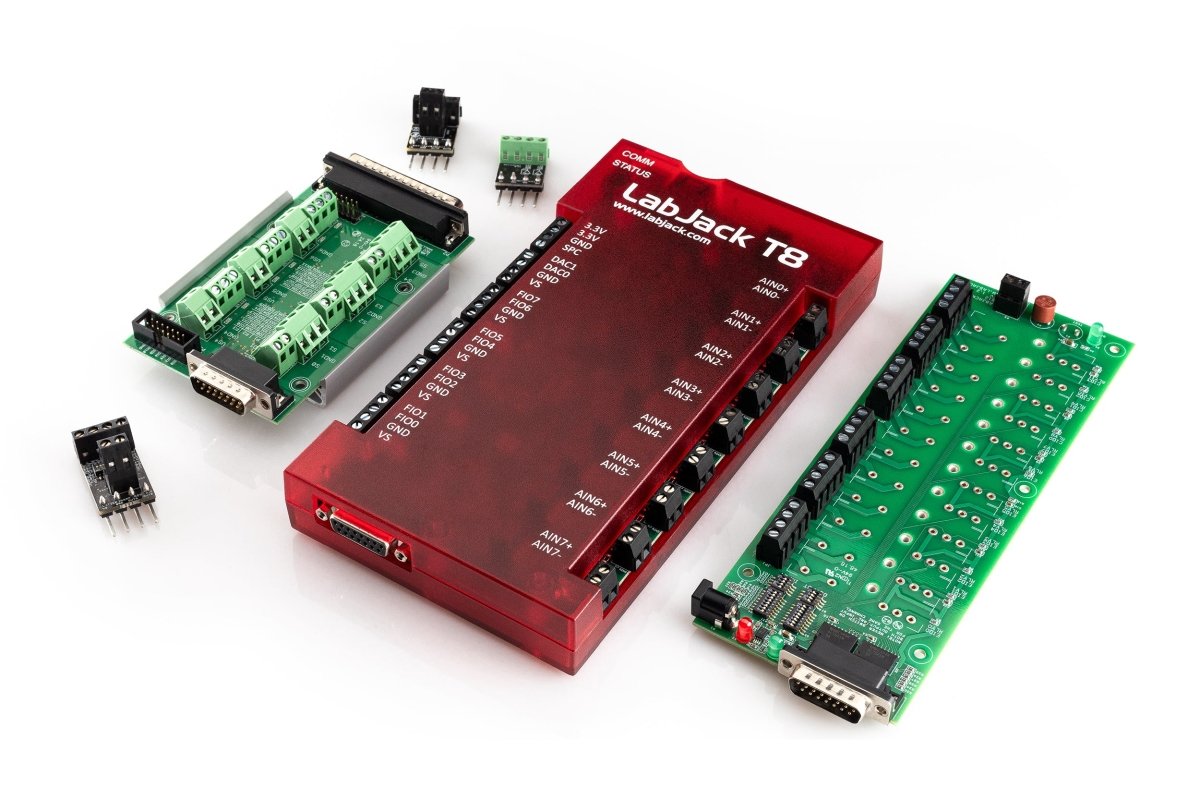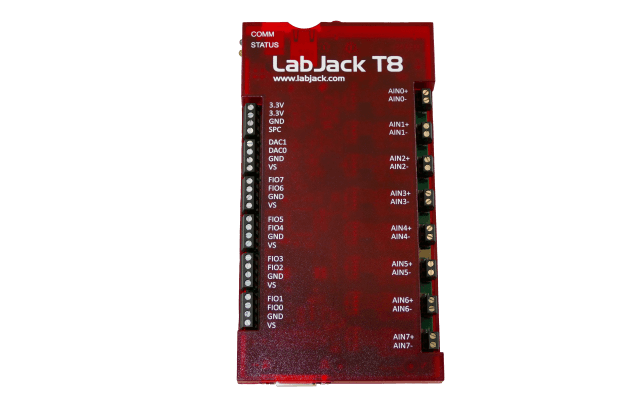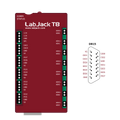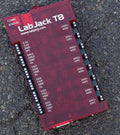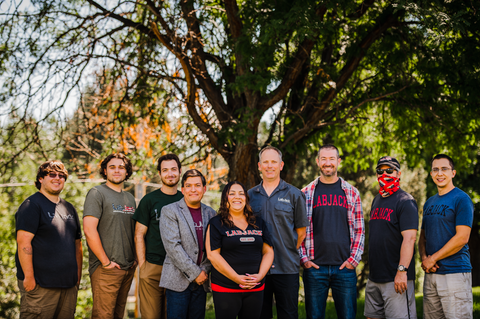Many of our products have been tested for CE marking, which reflects FCC compliance, EMC (electromagnetic compatibility), EMI (electromagnetic interference), RF emissions, RF immunity, and the ability to survive ESD (electrostatic discharge). Part of the CE mark is a Declaration of Conformity where we describe the standards LabJack devices are tested to meet. Our Declarations of Conformity can be found below.
All LabJack-branded products are CE, REACH, RoHS2, and CFM (Conflict-Free Minerals) compliant.
See the links below for the Declaration of Conformity certificates for LabJack devices.
Conflict Free Minerals
The LabJack Conflict Minerals (CM) policy can be found at this Link.
The LabJack Conflict Minerals Reporting Template (CMRT) spreadsheet can be found at this Link.
The LabJack Extended Conflict Minerals Reporting Template (EMRT) spreadsheet can be found at this Link.
The LabJack Additional Minerals Reporting Template (AMRT) spreadsheet can be found at this Link.
RoHS and REACH
The LabJack device RoHS and REACH compliance policy is here.
Toxic Substance Control Act
The LabJack device compliance policy with the Toxic Substance Control Act (Code 40, Part 751) can be found here.
US California Proposition 65 Act
The LabJack device compliance letter for the United States California Proposition 65 Act can be accessed here.
Biocidal Products (BPR) Compliance
The LabJack device compliance letter for the Biocidal Products (BPR) EU 2013/528 can be accessed here.
Persistent Organic Pollutants (PoPs) Compliance
The LabJack device compliance letter for the Persistent Organic Pollutants (PoPs) EU 2016/293 can be accessed here.
Mercury Compliance
The LabJack device compliance letter for Mercury EC 2017/852 can be accessed here.
Fluorinated Greenhouse Gas (FGHG) Compliance
The LabJack device compliance letter for Fluorinated Greenhouse Gas EU 2024/573 can be accessed here.
PFAS, PFOS, & PFOA Compliance
The LabJack device PFAS, PFOS & PFOA compliance statement can be found here.
Counterfeit Parts Prevention (CPP) Policy
The LabJack device Counterfeit Parts Prevention (CPP) policy can be found here.
United States Trade Agreement Act (TAA)
The LabJack device Trade Agreement Act (TAA) compliance statement can be found here.
Letter of Volatility (LoV)
Letters of volatility describe the various memory within a device, what is volatile and what is non-volatile, how information can be stored in memory, and how memory can be cleared. Links to the letters of volatility are listed below, and if your device is not listed contact us and we can add it.
Certificate of Conformance
Also called a Certificate of Conformity, Certificate of Compliance, or CoC. This is a simple industry standard document stating that our products comply with our standards for quality, specifications and workmanship. A blanket CoC is can be found here. If you need a different variation please contact us.
UL, CSA, or similar electrical safety standards
All LabJack products are low voltage, therefore these electrical safety standards do not apply. In the case of the RB12 and RB16, modules provided by other manufacturers might have a UL listing or similar.
Flammability
- LabJack's red enclosures: UL 94 HB, Sabic Polycarbonate Lexan 143R, E75735.
- LabJack's PCBs: UL 94V-0, E304660 (M1 or N2).
- Screw Terminals: UL 94V-0, Thermoplastic, E245249.
- Snaptrack: UL 94V-0, PVC, E58648.
- RB12/UE9 Power Jack: UL 94V-0, PBT 4815, E59481.
- USB Connector: E59481, PBT UL 94V Rated
- Pin Headers: E53664, 30% Glass Fiber PBT
LabJack Device & Accessories Flammability statement.
Country of Origin
Per export definitions, the official Country of Origin for LabJack-branded products is USA. With the following expectations:
Accessories (CB15, PS12DC, etc.) have a Country of Origin of India.
The InAmp3 ,2034DZ and 2034CAZ temperature probes which are China.
All software written by LabJack also has the Country of Origin of USA.
We do not claim the phrase "Made in the USA". This special designation requires that all raw materials are mined in the USA, and that all chips and components are manufactured in the USA. That is not feasible for any electronic devices.
Export
Export codes are assigned to everything we sell. For example, the schedule B code for the T7 is 8471.60.1050 and applies to the entire package including the T7 itself, power supply, USB cable, Ethernet cable, screwdriver, packaging, firmware and software. Firmware and software are part of our hardware. We do not sell any firmware and software so these do not have their own export codes.
Schedule B / HS / HTS
Main Devices (U3, T7, etc.): 8471.60.1050
Accessories designed for use with LJ main devices: 8473.30.0002
Sensors & Probes (LM34, EI-1022, EI-1034, EI-1050, 2034DZ, 2034CAZ): 9031.49.8000
3rd Party: Codes provided by manufacturer
ECCN
4A994.a
Which means license is NLR (no license required) as long as we don't export to the prohibited countries.
Prohibited Countries
Cuba, Iran, North Korea, Sudan and Syria
ITAR
Does not apply to our products
Production Status of LabJack DAQs, End of Life (EoL)
Below is the production status for all data acquisition (DAQ) devices ever made by LabJack:
- U12 (2001): NRND (Not Recommended for New Designs). No plans to discontinue. This is our oldest device, and we have newer devices that are recommended for new users. As of this writing there is no indication that any major sub-components will become unavailable.
- UE9 (2004): NLA (No Longer Available as of March 2022). Many parts required to build the UE9 have been discontinued by their manufacturers. Production of the UE9 has become increasingly difficult and expensive, if not impossible. The T7 is a newer (not drop-in) replacement that is superior in every way including cost.
- U3 (2006): Active. All variations of U3-HV and U3-LV. Estimated time horizon of 2030, due to production ending for the main microcontroller. See Section 2.13 of the U3 Datasheet for information about older hardware variations.
- U6 (2009): Active. All variations. Estimated time horizon of 2030, due to production ending for the main microcontroller.
- T8 (2022): Active. All variations. No plans to discontinue.
- T7 (2013): Active. All variations. No plans to discontinue.
- T4 (2017): Active. All variations. No plans to discontinue.
Production status of other non-Active devices made or sold by LabJack
- EI-1022: NRND (Not Recommended for New Designs) - The EI-1022 temperature probe, manufactured by Electronic Innovations Corporation, is not recommended for new designs.
- EI-1034: NRND (Not Recommended for New Designs) - The EI-1034 temperature probe, manufactured by Electronic Innovations Corporation, is not recommended for new designs.
- RB16: NRND (Not Recommended for New Designs) - The RB16 relay board is not recommended for new designs.
- LJTick-InAmp Rev 2: EoL, NRND (Not Recommended for New Designs). A newer, simpler, InAmp is available. Rev 2 has been replaced by Rev 3.
- Digit: NLA (No Longer Available). The Digit was discontinued in 2017.
- EI-1050: NLA (No Longer Available). The EI-1050 humidity and temperature probe, manufactured by Electronic Innovations Corporation, was discontinued in 2020.
- EB37: NLA (No Longer Available). The EB37 experiment board was discontinued in 2022.
- EI-1040: NLA (No Longer Available). The EI-1040 dual instrumentation amplifier, manufactured by Electronic Innovations Corporation, was discontinued in 2023.
Mean Time Between Failure (MTBF)
LabJack has not done official MTBF analysis or testing for any devices. LabJack devices are made of normal semiconductor components, and do not use any components with a rating in terms of limited lifetime. It is rare for our devices to fail on their own. Overwhelmingly, the failed devices we see have damage that can be attributed to an out-of-spec voltage or current that has been introduced to the device from some external source. This is the nature of data acquisition devices with user controlled connections spanning from communications, power, ground, and I/O.
The following link mentions a DoD document that could be used to generate an MTBF number based on statistical models:
http://www.computerworld.com/s/article/105781/MTBF
Below is a quote from someone at a major university who needed to assign an MTBF to our products:
"Typically, for an electronic device such as yours, with off the shelf components, and with an approximate number of parts-by-count of roughly 50, I should expect an MTBF of 30K~75k hours. I'll probably utilize some figure within that range."
50k hours is about 6 years of continuous use, which we can say from experience is too low. We would estimate that operating 100 devices continuously for 10 years would result in 10 failures not due to external forces, and thus our estimate for statistical MTBF would be 500k hours or 57 years.


